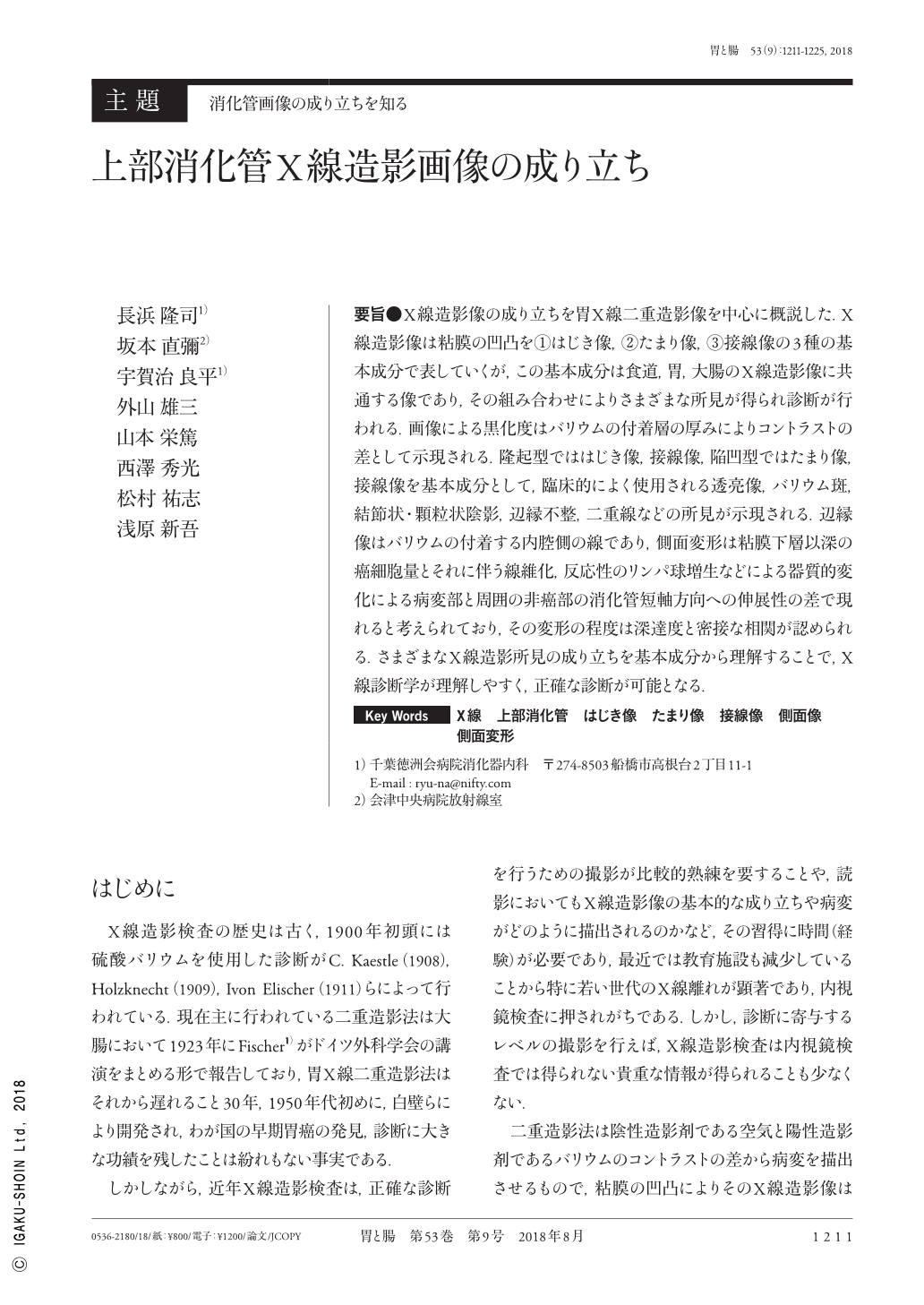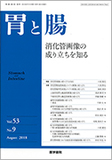Japanese
English
- 有料閲覧
- Abstract 文献概要
- 1ページ目 Look Inside
- 参考文献 Reference
- サイト内被引用 Cited by
要旨●X線造影像の成り立ちを胃X線二重造影像を中心に概説した.X線造影像は粘膜の凹凸を①はじき像,②たまり像,③接線像の3種の基本成分で表していくが,この基本成分は食道,胃,大腸のX線造影像に共通する像であり,その組み合わせによりさまざまな所見が得られ診断が行われる.画像による黒化度はバリウムの付着層の厚みによりコントラストの差として示現される.隆起型でははじき像,接線像,陥凹型ではたまり像,接線像を基本成分として,臨床的によく使用される透亮像,バリウム斑,結節状・顆粒状陰影,辺縁不整,二重線などの所見が示現される.辺縁像はバリウムの付着する内腔側の線であり,側面変形は粘膜下層以深の癌細胞量とそれに伴う線維化,反応性のリンパ球増生などによる器質的変化による病変部と周囲の非癌部の消化管短軸方向への伸展性の差で現れると考えられており,その変形の程度は深達度と密接な相関が認められる.さまざまなX線造影所見の成り立ちを基本成分から理解することで,X線診断学が理解しやすく,正確な診断が可能となる.
Here, we explain the fabric of gastric radiography, focusing on images acquired by a double-contrast method. The blackening degree in radiographic images demonstrates the contrast difference between the thicknesses of barium layers. The concavity and convexity on the mucosal surface are represented by three primary components in X-ray radiography, namely, protrusion defined by barium translucency, depression defined by barium collection, and outline images. A combination of these basic components, frequently observed in the esophagus, stomach, and large intestine, has been used to obtain substantial clinical information, resulting in a definitive diagnosis.
More specifically, the protrusion-type lesion typically appears as repelling and outline images, whereas barium translucency and outline images signify the depression-type lesion. Combining these constituent images, physicians can determine the characteristics of clinically well-defined figures, such as translucency, barium spot, nodular or granular shadowing, border irregularity, and double line on the basal plane.
For instance, lateral images of a lesion in a double-contrast method comprise several lines on the side of the lumen to which barium adheres. Thus, lateral deformity of the lesion could suggest the difference of extensibility between neoplastic and non-neoplastic tissues in the short axial direction of the digestive tract. This structural transformation is triggered by increasing the volume of submucosal tumor cells, fibrosis accompanied by tumorigenesis, and reactive lymphoreticular hyperplasia. Notably, the degree of this transformation is closely related to the depth of invasion. Therefore, elucidating the working of various radiographic images in constituent perspective is imperative for learning and practice of the precise diagnosis in X-ray radiography.

Copyright © 2018, Igaku-Shoin Ltd. All rights reserved.


